#jian
Text

JIAN the SUNEATER
(based on a screenshot my good friend @saint-nevermore took). stylized Jianchangosaurus
#jian#Jianchangosaurus#prior extinction#PE#art#my art#digital art#digitalart#bird#dinosaur#dino#paleo#paleoart#paleontology
603 notes
·
View notes
Text
OK;
So I gave the Netflix, avatar the last Airbender a second try. I took off my judgment goggles and looked at it as a brand new work of fiction. Now mind you my opinion means nothing, but I do have a certain level of emotional attachment to this intellectual property.
The live action show is very pretty, I love the costumes and I actually enjoy some of the characters. Keep in mind I’m only 20 minutes into the second episode. I’m a little busy these days. But I plan to make some time. I took down my original post where I called the show trash so that I could collect more data for my opinion.
Some grumbles;
The special effects are kind of wonky in places. I don’t care for Appa‘s hair. 😁
Some of the fight scenes actually have good kung fu in them. Hats off to the choreographer. However the connected CGI animations of the characters performing bending imho lack the basic essences of bending. The Airbender staff fighting had no “bending” at all.
The work we did on the original show came from a certain type of process, and none of those processes seem to exist in this current offering from Netflix…
I think if Bryan and Mike had stuck around on the project you may have seen some differences, but we will never know will we?
I may write more about this after I’ve seen the entire affair. I’m still a little upset about what NF did to cowboy bebop. Both of these shows had a certain “soul“ in the original animations, but that is one more element missing in these current efforts.Heck I know people that worked on NFATLAB that won’t even watch it.
In closing someone brought to my attention that some clown on Reddit called me an asshole.
Meh, I may very well be.
But your opinions are just like assholes, everybody’s got one 😜
(((i’ve had a Reddit account since 2008))
🙃







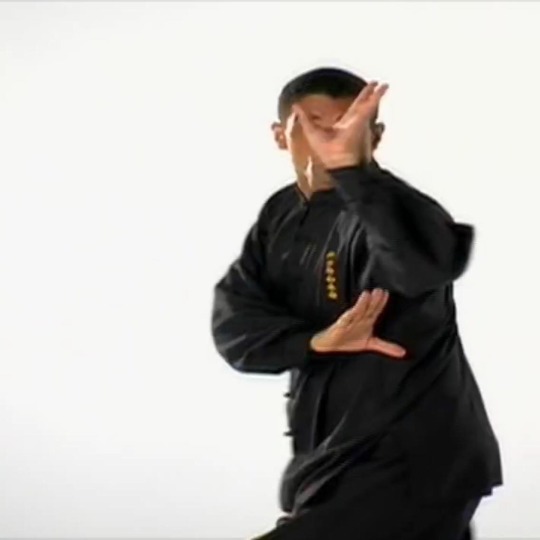


153 notes
·
View notes
Text
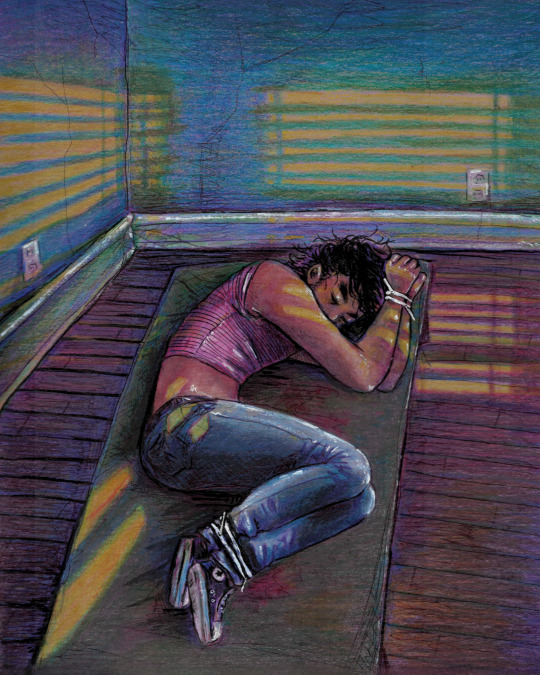
my piece for @thewhumpyprintingpress ABCs of Whump zine!! Z for Zipties 💖 (get ur copy here 👀)
this was my first experience working on a zine project, i had a blast & learned a whole lot 🥰
128 notes
·
View notes
Text
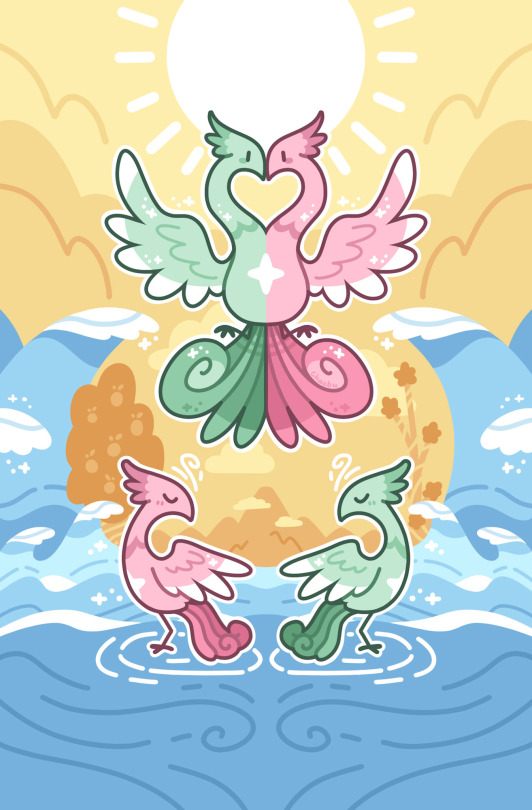


My full piece for @/folkloretarot on twitter: the Jian Birds from Chinese mythology as the Lovers card! I also designed an acrylic standee and some vinyl stickers for the project!
Please check it out! There’s so much cool art, artists, and creatures featured in the deck!
#jian birds#jian#four symbols#kappa#fresno nightcrawler#cait sith#cockatrice#vermilion bird#white tiger#azure dragon#black tortoise#tarot art
187 notes
·
View notes
Photo
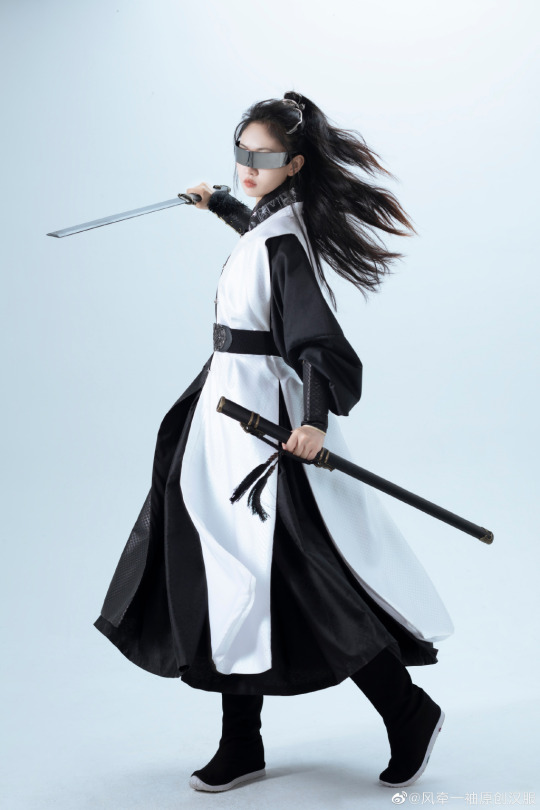

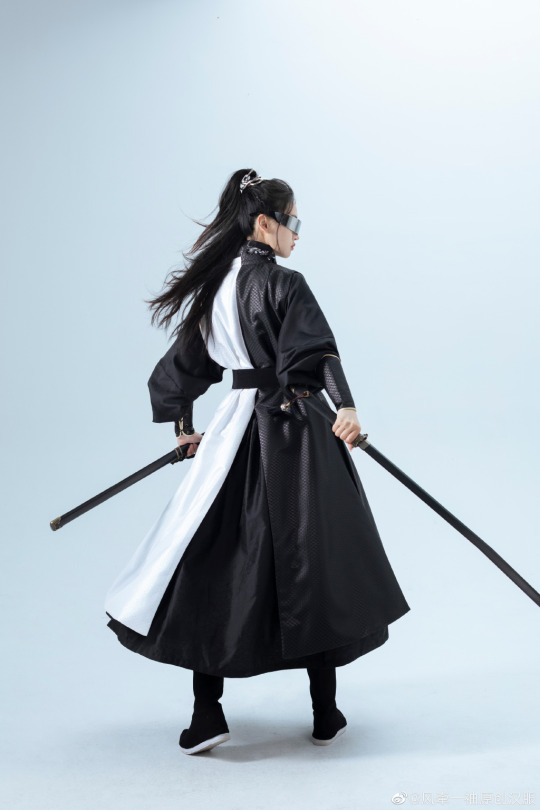
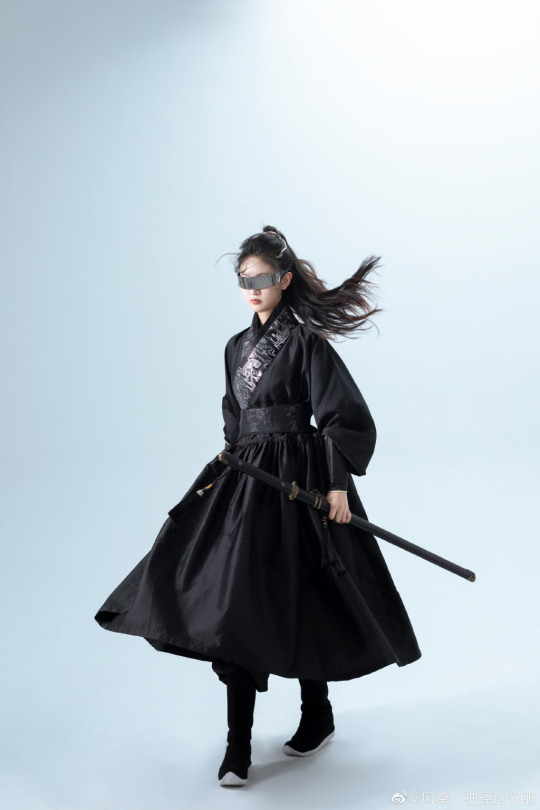
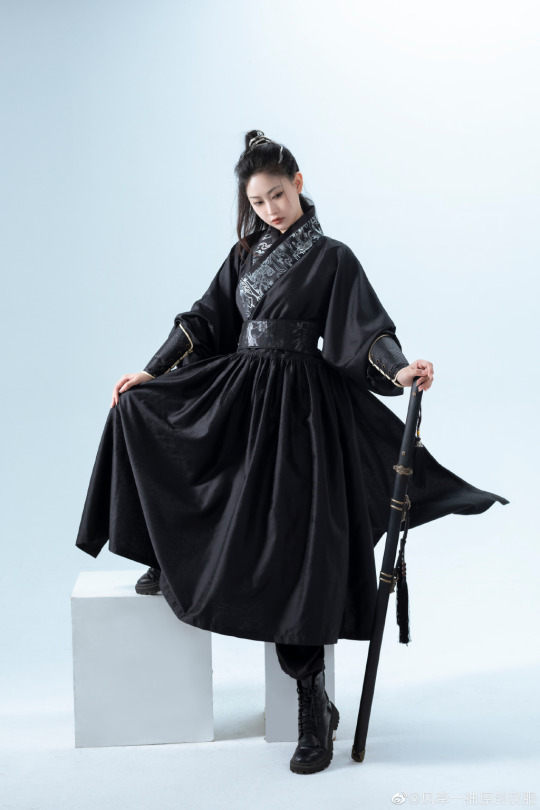

chinese hanfu by 风牵一袖
2K notes
·
View notes
Photo

The Lovers. Art by Chaobunnies, from the Of Folk & Fable Tarot.
the Jian Birds from Chinese mythology as the Lovers card!
Full art:

24 notes
·
View notes
Text



Sword (jian) and scabbard, probably made in the court workshops of the Yongle Ming Emperor. Chinese, Ming Dynasty, early 15th century.
The hilt is of gilt iron. The grip is of gibbous rectangular section, punched with small circles to imitate ray skin. Down the centre of the front is a raised spine bordered by tiny flames at either side.
The pommel is of trilobed form, bordered at the front and rear by bands of golden scrolls. The front panel of the pommel is chiselled and fretted with a dragon surrounded by interlacing flames, with triple claws on each paw. At the rear of the pommel, the central panel is decorated with a monster mask (kirtimukha), surmounted by a silvered crescent and golden disc, and with human hands, also surrounded by flames. At either side of the pommel are the Eight Buddhist Emblems of Good Augury (ba jixiang): the wheel of law (dharma), the standard, the treasure jar, the pair of fish, the endless knot, the lotus, the parasol and the conch shell of victory.
The guard is embossed in the form of a monster mask, surmounted by a silvered crescent and golden disc. The face is punched with circles, the canine teeth silvered, the eyebrows and whiskers chiselled and gilt. The horns are in the form of crab claws. At either side of the mouth is a paw in the form of a human hand. The head is surrounded by scrolling curls of mane. The rear of the guard is rendered as the underside of the jaw, with a set of silvered teeth, and a narrow beard running into a throat of alternate silvered and gilt bands.
The blade is associated but is probably a later replacement of Tibetan manufacture. It is formed of pattern-welded steel, of diamond section, straight and double edged. The pattern welding produces a mirrored pattern of addorsed crescents at either side of the medial ridge. The tang is of rectangular section, tapering towards the pommel, with a large expanded peg-hole towards the end. The edges have been ground and sharpened.
The scabbard is of wood covered in green stained leather and bound with gilt iron. At the throat is a V-shaped cut out at the front for seating the blade, and a scalloped cut-out in the leather to accommodate the guard. The throat retains traces of the scarlet silk with which it was lined. The iron binding comprises a long, facetted strip running all the way round either edge.
There are eight transverse bands at the rear, the uppermost and fourth of which are wider than the others, and extend round the front of the scabbard forming suspension loops. The edging strip has four main facets, with an additional narow facet at either side. It is decorated with scrollwork in gold running down each facet, and matching that on the pommel. At either end is a set of three golden lotus leaves.
The front panel is divided stylistically into upper and lower sections. The upper section is decorated quite plainly; a series of five beaded transverse bands divide it into six sections, and there are three vertical bands of fretted four-petalled rosettes in each section.
At the throat is a cusped section with a beaded border, below which is a band of flames. The ornate lower section has six smaller segments, divided vertically and horizontally by fretted 'vajras', each with a 'yinyang' symbol in the central knop. The half-'vajras' at either side emanate from the heads of lions, and the vertical bands of decoration at either side are formed by rows of flames.
Above and in the middle of these divisions are two square panels, each containing a cusped lozenge shaped central medallion, the corners decorated with interlacing flames. The uppermost of these two panels contains two dragons intertwined amid flames, with the heads at top right and bottom left; the lower has two similar dragons, with thicker bodies, and with their heads confronted at the left and right.
The chape section is decorated with a large panel of interlacing flames, within a beaded border. At the rear of the scabbard, the upper band is decorated with alternating gold and silver scrollwork, and terminates in a rosette at the front. The next two narrow bands are decorated with silver scrollwork only. The fourth is decorated at the rear like the top one, but is extended accross the front in a broad band; it is chiselled with four medallions decorated with gilt characters on silver grounds, and surrounded by interlacing gilt flames. The three lower bands are decorated in gold scrollwork.
The rear chape panel has a small, flat piece of rather coarse, scrolling interlace at the bottom, and narrow bands of petalled rosettes at either side.
A four character Tibetan inscription on the lower suspension loop reads 'khi'u ga ral gri' (honourific sharp sword).
China, 15th century (About 1420),
Leather, Ferrous, Gold, Silver, Semi-precious stone, Silk, Wood,
Dimensions:
Blade Length: 30 inches
Overall (sword) Length: 35 inches
Courtesy: Royal Armouries Museum, Leeds, United Kingdom
Sword (jian) and scabbard, probably made in the court workshops of the Yongle Ming Emperor. Chinese, Ming Dynasty, early 15th century.
#art#history#design#style#sculpture#silver#gold#semi precious stones#royal armouries#leeds#silk#wood#sword#jian#scabbard#ming#15th century#yongle#imperial
43 notes
·
View notes
Text
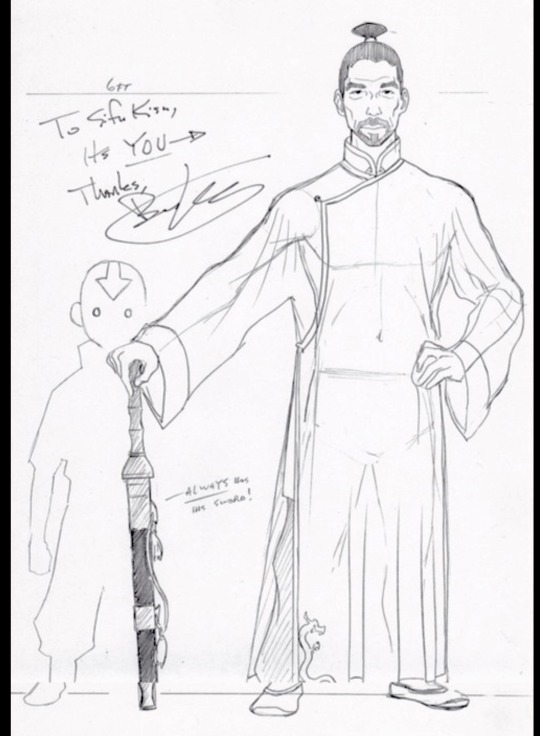
All of my friends are begging me to play this guy in the live action…
Hollywood 🫵🤣
#sifu kisu#atlab#northern shaolin#lok#northern shaolim#atlab lok#jian#kung fu#baguazhang#youtube#piandao costume#piandao sword#ships piandao and motoko#piandao
54 notes
·
View notes
Text
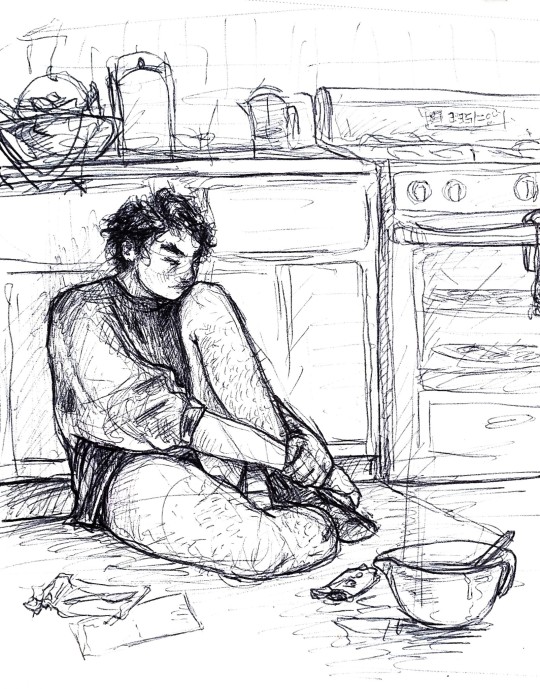
(ty @figuwhump for the pose! 💕)
Jian is an insomnia baker <3 welcome to 3am floor cookies, sponsored by The Horrors
#whump#eric#sin squad#jian#eric draw#sin squad art#figuwhump#whump art#insomia#hurt/comfort#recovery whump#amputee whumpee#um hehehe#whumputee#sleep deprivation#hi hey hello this blog is a big help as i try to get back into drawing and postingmore#it's really fun to adapt references for Jian's leg#sometimes i gotta attempt the pose without the use of my right leg‚ to see where his weight would actually be#like for this one there's no way he'd be holding it up beneath his arm without the foot to support it#heavy 😩 not restful 😩😩
81 notes
·
View notes
Text
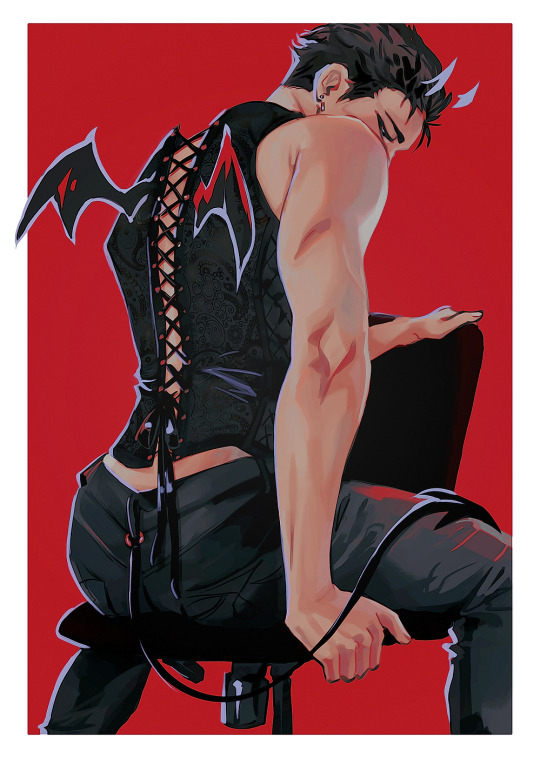
Akira - [that corset video from innovacorsetry lives rentfree in my mind]
46 notes
·
View notes
Text
difference between similar motion of dao刀 and jian剑
206 notes
·
View notes
Text
The sword of the day is the jian.

The jian is a straight, one-handed and double edged sword from China, used for a very long time. One of the earliest examples is the Sword of Goujian, dates from the 7th century BCE, and it is one of a handful of weapon designs that survived the switch from bronze to steel, which speaks well of its usefulness. Most examples are relatively short and light swords, suitable for one-handed use, though longer two-handed variants do exist. Of the four major weapons used in Chinese martial arts, the jian is considered the most elegant and refined; it is called “the gentleman of weapons” in Chinese folklore.
44 notes
·
View notes
Photo
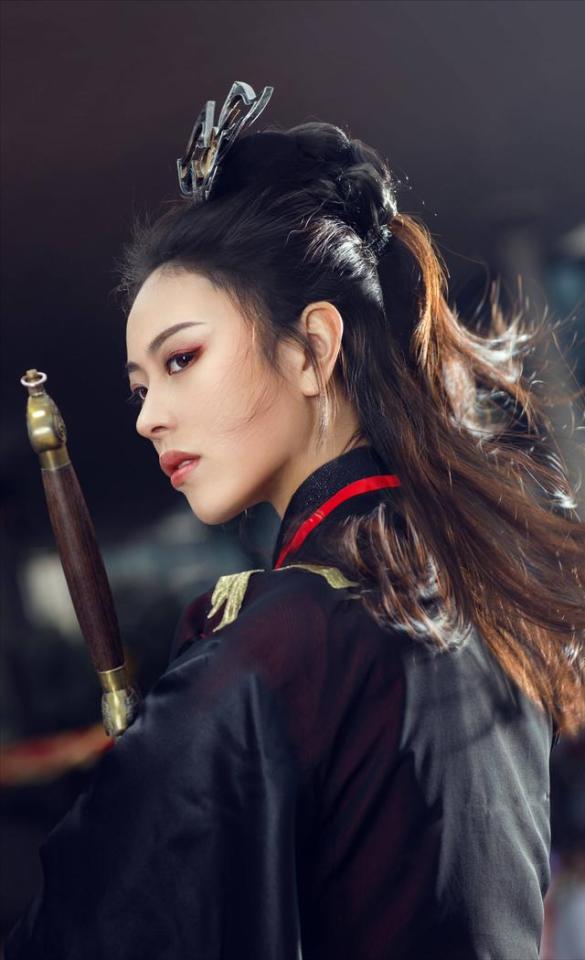
Sifu Ling Yun
108 notes
·
View notes
